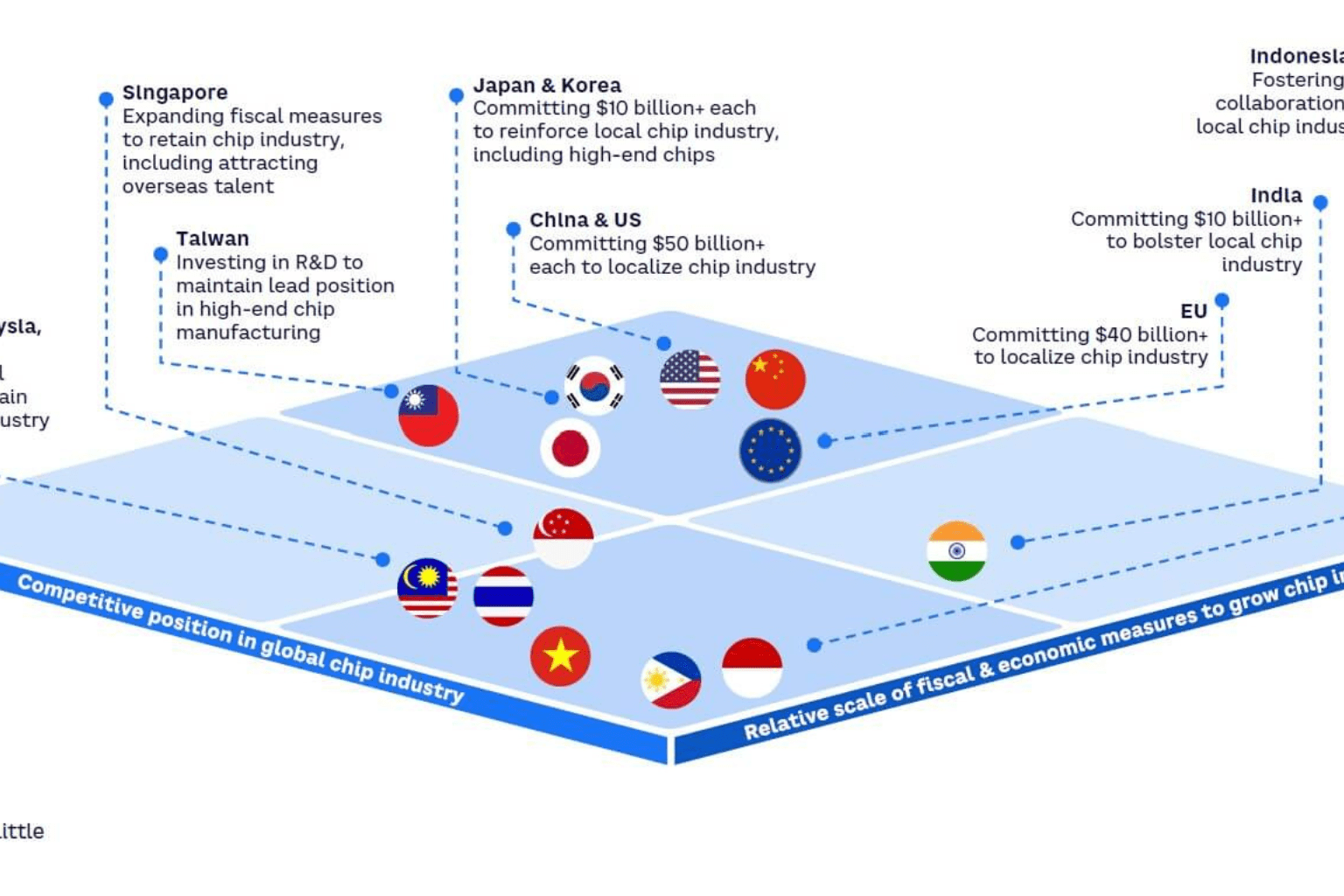Rising temperatures, severe storms and other climate-related events are putting new pressure on industries worldwide. In the semiconductor sector, where precision and reliability are critical, environmental disruptions are creating growing challenges for supply chains. Erik Hosler, an advocate for infrastructure foresight in chip manufacturing, stresses that long-term planning is now essential to maintaining resilience and operational stability.
As climate risks become more frequent, chipmakers and governments are adjusting their strategies to guard against disruptions ranging from flooding to power outages. Building climate resilience is increasingly viewed as necessary for protecting supply continuity and staying competitive in a tightly connected global industry.
Why Semiconductors Are Vulnerable to Climate Risk
Semiconductor manufacturing is among the most resource-intensive and geographically concentrated industries. Semiconductor fabrication plants, or fabs, require vast amounts of ultrapure water, steady electricity and stable conditions for highly sensitive equipment. Disruptions to any of these elements, whether from droughts, wildfires, typhoons or extreme heat, can delay production, damage infrastructure, and threaten yield quality.
Many leading fabs are in regions prone to environmental stress. Taiwan, home to more than 60 percent of global foundry capacity, frequently experiences earthquakes and typhoons. In the southwestern United States, where new fabs are being built, prolonged drought and power grid instability present long-term concerns. Germany and the Netherlands, key players in EU semiconductor growth, are facing increased flood and heatwave threats.
As weather patterns become more volatile, the industry must expand its planning horizons. Environmental disruptions are no longer rare; they are a persistent part of the operational landscape.
Diversifying Locations to Mitigate Regional Risk
One of the most direct ways to reduce climate risk is through geographic diversification. Instead of concentrating production in a few high-risk zones, companies are now distributing operations across multiple regions. This approach allows for continuity even when one location faces disruption.
The United States CHIPS and Science Act, along with the EU Chips Act, facilitates this strategy by incentivizing local production. Foundries are responding with investments in Arizona, New York, Ohio, France and Germany. These areas were selected for their strategic market access, relative environmental stability, and access to sustainable infrastructure.
Site selection now includes climate models and resiliency benchmarks. Areas with low natural disaster frequency, strong water management systems and renewable energy resources are gaining favor in global expansion plans.
Water Scarcity and Wastewater Recycling
Semiconductor fabs are massive water users, consuming millions of gallons per day for cooling and wafer cleaning. As droughts intensify, water availability is becoming one of the most pressing climate-linked challenges.
To address this, leading companies are investing in advanced wastewater recycling and closed-loop systems. These technologies allow up to 90 percent of water to be reclaimed and reused, dramatically reducing production’s environmental footprint.
In Singapore and Taiwan, where water scarcity has already forced production slowdowns, fabs are building on-site water treatment facilities to reduce dependency on municipal systems. In the United States, new fabs are partnering with local utilities to expand reclaimed water availability.
Water stewardship is also becoming a key factor in regulatory and investor evaluations. Transparent water use reporting and conservation plans are helping semiconductor firms demonstrate long-term sustainability to governments and stakeholders.
Energy Resilience and Renewable Transition
Semiconductor fabs demand high levels of continuous power. Any voltage fluctuation or blackout can result in scrap, yield loss or equipment damage. As climate events threaten grid stability, from heat-driven surges to hurricane outages, fabs must ensure uninterrupted access to clean, stable energy.
Some companies are addressing this by investing in on-site solar, battery storage and microgrid infrastructure. These localized systems reduce dependence on external grids and provide backup during extreme weather events.
In Europe, where energy prices have spiked due to geopolitical disruptions and climate pressures, fabs are accelerating energy efficiency upgrades and negotiating long-term green power contracts. In the United States, states like Texas and Arizona are integrating grid modernization efforts into semiconductor development plans.
Erik Hosler notes, “Light source development and lithography advancements are shaping the future of semiconductor applications, where the light will drive the next wave of innovation.” That future depends on clean, reliable energy. Energy independence through renewables is now a cornerstone of climate resilience strategies across the semiconductor value chain.
Securing Climate-Stable Supply Chains
Beyond the fabs themselves, semiconductor production depends on a vast and delicate network of suppliers. Specialty chemicals, photoresists, silicon wafers and lithography equipment often come from single-source providers that may also be exposed to climate threats.
Companies are conducting risk audits to assess supplier vulnerability and identify critical nodes. Dual sourcing, regional warehousing and supplier diversification are becoming more common as ways to mitigate exposure.
Logistics planning now accounts for climate-related shipping delays and border closures. Contingency routes, buffer inventory and predictive analytics are being integrated into procurement systems to maintain continuity when transportation is disrupted.
Infrastructure Design for Future Conditions
Many current fabs were built decades ago using environmental assumptions that are no longer valid. Today’s climate conditions, hotter summers, stronger storms and rising sea levels are pushing the limits of facility design.
New fabs are being engineered for resilience from the ground up. Flood barriers, elevated electrical systems, thermal shielding and advanced HVAC are now standard features in many designs. Roof structures are reinforced to withstand high wind loads, and data centers are being relocated away from floodplains.
Insurance premiums, permitting rules and investor pressure are all reinforcing this trend. Climate resilience is no longer a niche concern; it is part of the value proposition for any modern semiconductor facility.
Government Incentives and Policy Integration
Public investment is playing a key role in aligning climate goals with semiconductor growth. Both the U.S. and EU now tie sustainability benchmarks to funding eligibility, encouraging manufacturers to prioritize resilience and green infrastructure.
In the United States, the Department of Commerce requires grant applicants under the CHIPS Act to outline climate risk mitigation plans. In the EU, environmental impact assessments and green energy sourcing are baked into semiconductor project evaluations.
These incentives help to align national security, climate and industrial goals. The result is a semiconductor sector that is not only more resilient to disruptions but also better positioned to support the clean energy transition across the broader economy.
Building Smarter, Stronger Semiconductor Networks
Climate resilience in semiconductor supply chains is no longer optional; it’s a strategic imperative. The ability to adapt to extreme weather, resource scarcity and energy volatility is now essential to maintaining global competitiveness and technological leadership.
By investing in water recycling, renewable energy, infrastructure redesign and supply chain diversification, semiconductor companies are building systems that can withstand the shocks of a changing planet. These moves are not just defensive; they are part of a broader transformation toward sustainable and stable growth.
The next era of semiconductor innovation will belong to companies that can deliver performance and reliability in any environment. Climate readiness is the new foundation for long-term resilience, and it’s reshaping how chips are made, where they’re built and how value is protected across every layer of the supply chain.

